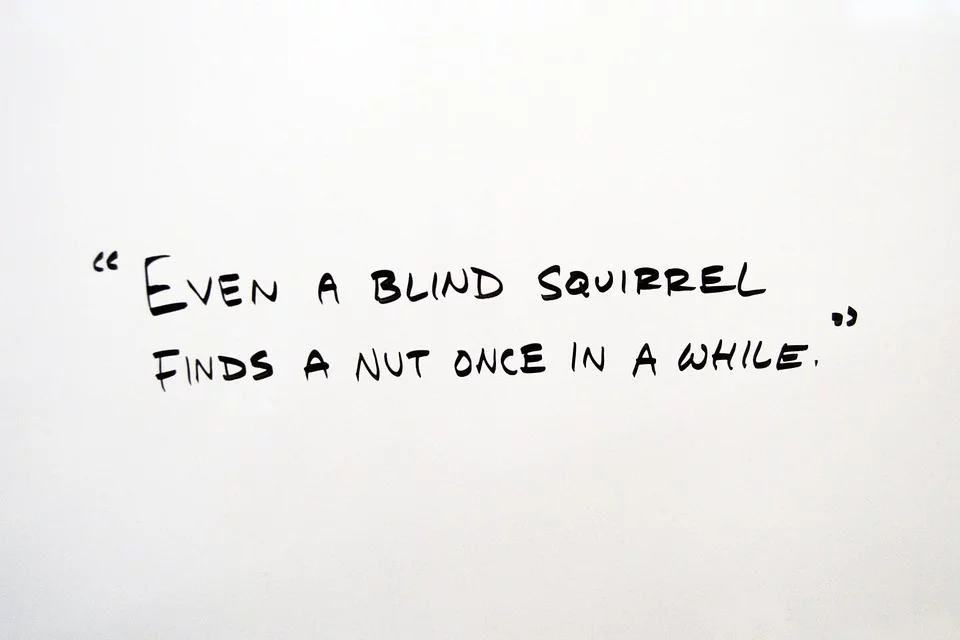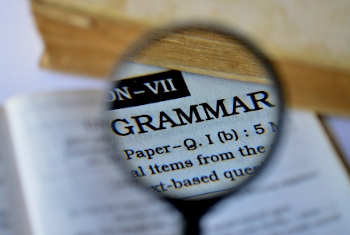You do not know this but majority of the GMAT Aspirants go wrong in GRAMMAR. Even more, a lot of GMAT Aspirants do not even understand how to attack GRAMMAR during their preparation.
Engineers think that GRAMMAR is more about English and tend to stay sway. What they do not realize is that if followed with a plan, and objective understanding of what the rules are, sentence correction is more like quant. You have to memorize the rules and get better at recognizing them when you see those rules inserted in wide variety of questions. GMAC can make a million questions, but they cannot make a million grammar rules. The rules are limited, and you just have to approach them with a very clear mindset.
From my chat, with a few acquaintances wishing to dabble in GMAT and MBA, I have come across a statement. “GMAT grammar rules are redundant and only apply to GMAT itself.”
I was wondering where this misconception was born and came across the reason by chance. We as students have often used grammar rules leniently in our lives and thus when the technical aspect of these concepts presents itself during the GMAT sentence correction segment, it becomes hard to shake off the bad habits.
I’m sure you won’t stick to these GMAT grammar rules every time you type a mail or send out a message, but, I’m sure once you master them you would realize you had been subconsciously using a lot of them already and that they aren’t as scary as commonly believed.
GMAT tests you on skills and concepts that you already know. Some students need just a refreshment of these concepts through their GMAT prep while others might need to learn these again. No matter which category you fall in, you can still end up scoring 700+ on the GMAT if you properly utilize your GMAT prep.
Since the sentence correction on the GMAT will be testing you on basic concepts that you have been learning all through school, they have to raise the stakes. This converts itself into tricky questions that have answers that will seem wrong if you don’t have a deep knowledge of the grammar rules the test follows.

Hence the bad reputation.
No matter what questions you’re faced with, during the sentence correction segment of the GMAT, these grammar rules are all you need to master to ace it.
Did you notice the grammatical error in that sentence? Don’t worry, by the end of this article, you will.
-
-
SUBJECT-VERB AGREEMENT
Since the beginning of time you have been taught the value of a subject and verb in a sentence. The subject is the “doer” and the verb is “the thing the subject is doing.”
You have also been taught that these two need to be in agreement. Meaning that if the subject is plural, the verb needs to be plural as well. But that’s not where it stops. Obviously the GMAT won’t test you on something as simple and straightforward as singular and plural.
One must start by finding the subject in a sentence. This can be a common way the test tries to trick the test-taker. When a sentence on the test contains an inverted verb, it generally contains a subject-verb disagreement.
One must also keep an eye out for plural nouns. Plural nouns denote a group of things and can be commonly followed by a plural verb in the test. Many test-takers get so busy finding the more complex grammatical errors that they miss these small ones.
This can be a fatal flaw and must be avoided
-
VERB TENSE AND FORM
A sentence does not necessarily need to carry the same tense throughout. However, the different tenses in a sentence still need to precede each other in a way that makes sense.
Let’s understand it better with an example.
When he saw her pant, he knew something bad had happened.
This sentence contains three forms of tenses. ‘Saw’ and ‘knew’ are simple past forms of the words ‘see’ and ‘know’. ‘Had happened’ is the past perfect tense for ‘happen. Even with separate forms of tenses, the sentence still makes the fact that the events are continuous and inter-related clear.
But had this sentence been formed with the wrong tenses, which words would you edit to make it correct?
When he saw her panting, he knows something bad has happened.
When a sentence presents us with an option to choose one form of tense over the other, it doesn’t matter how many words are from the same tense. What matters is the tense portrayed in the independent clause. Any dependent or sub-clauses will always follow the tense present in the independent clause.
Thus, ‘knows’ and ‘has happened’ will be changed to their respective past tense forms following the tense of ‘saw’.
-
NOUN-PRONOUN AGREEMENT
Personally, I find the noun-pronoun agreement to be an easier, and fun rule. This is a rule that you can certainly learn like the back of your hand.
All you need to do to solve these questions is to first find the pronoun in the sentence. Once you have identified the pronoun it’s time to look for its antecedent or the noun it is referring to. This is pretty much it. These are the only two parts you need to know to implement this grammar rule in your GMAT sentence correction question.
Once you start looking for the pronoun you can face two possible problems.
- There are too many nouns.
- The noun and the pronoun are of different gender/quantity/person.
-
- Whenever there are more than one nouns in a sentence, the pronoun that follows must be accompanied by a marker that clarifies which noun the pronoun is referring to.
- Sonia, Trisha, and Myra were all present at her birthday party.
The pronoun here is clearly ‘her’. However, there are three nouns and the ‘her’ could be referring to any one of them. Thus, this will be considered an error on the GMAT
- In case the gender/quantity/person of the pronoun does not match the gender/quantity/person of the noun, the GMAT considers it as an error.
- Ramesh told me that its cat had ran away.
- Whenever there are more than one nouns in a sentence, the pronoun that follows must be accompanied by a marker that clarifies which noun the pronoun is referring to.
We can clearly see here that ‘its’ is not the right pronoun for Ramesh. Although the pronoun ‘its’ shares the same quantity and person with the noun ‘Ramesh’, it will still be considered an error as the gender for both the noun and the pronoun is not the same.
-
PARALLELISM
Parallelism can be one of the trickiest grammatical errors on the sentence correction segment of the GMAT. Although it is one of the easier grammar rules to identify and correct, it requires absolute attention to detail.
It is easy to identify as it will be marked by a list marker. This list marker could be a conjunction next to a long phrase, or a single word. The tricky part is that students can miss that small conjunction in a long winding sentence.
Once you have identified the list marker, i.e. the conjunction, the rectification is very simple.
Consider every item on that list as two blocks on either side of the balancing beam. Both the sides need to be equal to keep the beam balanced, similarly, you need to structure your answer in a way that the phrases on either side of the conjunction should be similar.
For example:
He thought running, swimming and cycle would make him lose weight.
The list marker in this sentence is and. Since ‘and’ marks a list, we will follow the commas that precede it to find out all the items of the said list. We find here three items on the list; running, swimming, and cycle.
As you must have already noticed, while running and swimming are both -ing verbs, cycle isn’t. to balance out this list, converting cycle to cycling would be the way to go.
-
INCORRECT COMPARISONS
-
Moving on to a more complicated one, incorrect comparisons are often mistaken as parallelism errors.
The rule to follow with this particular error is to make sure the comparison in the sentence is noun to noun, verb to verb and so on.
Let’s look at an example to really understand this.
Exactly like a block of blue cheese, which has Penecillium Roqueforti, a type of mold, added to it for flavor, people who eat molded slices of brie won’t fall sick.
The comparison being made here is between blue cheese and people who eat molded slices of brie. Logically, you can see that those two things aren’t comparable.
Thus, the correct answer for this would look something like this.
Exactly like a block of blue cheese, which has Penecillium Roqueforti, a type of mold, added to it for flavor, molded brie won’t make people, who eat it, fall sick.
-
MODIFIERS
Modifiers are the phrases that are used to provide extra information about a part of a sentence. Even on the removal of modifiers, a sentence will mostly retain its grammatical accuracy and meaning.
Two of the common errors in the GMAT that are regarded with the modifiers are; misplaced modifiers and a modifier used to distract from other errors in a question.
The solution to the second problem of the GMAT using modifiers to confuse test-takers is easy to deal with. Whenever you notice a modifier being present in a sentence and can’t figure out the error, simply read the sentence without reading the modifier. Since it is only explaining a part of the sentence, no grammatical error would present itself on removing the modifier.
For the first problem of the misplaced modifier, make sure that the modifier is in close proximity to the thing it’s modifying.
For example:
An unjust and unworthy ruler, his subjects overthrew king Gaius.
In this sentence, ‘an unjust and unworthy ruler’ is a modifier for king Gaius. However, from the placement of Gaius being towards the end of the subject and not right next to its modifier, the error makes it seem like the modifier is for his subjects. Which is logically not possible. His subjects can’t be ‘an unjust and unworthy ruler’.
-
REDUNDANCY
Many redundant phrases are used daily in spoken and written English without any consequences. However, GMAT isn’t so keen on them.
Redundancy refers to the mentioning of an idea or intention more than once in a sentence. GMAT asks all test-takers to identify such redundancies and remove any repeated ideas or intentions.
For example:
The news about losing the World Cup had shook the nation to its core but the fans still maintained decorum during the course of announcements that followed.
I am sure you have heard the words ‘during the course of’ being used alongside each other on multiple different occasions. However, the word ‘during’ and the phrase ‘the course of’ express the same idea, and thus, are considered an error when used together during the GMAT.
-
IDIOMS

| IDIOM |
|---|
| A debate over |
| A means to |
| A responsibility to |
| A result of |
| Ability to |
| Act as |
| Act like |
| Agree on |
| Agree to |
| Agree with |
| Aid in |
| Allow for |
| Appeal to |
| Are in danger of |
| As/as |
| Ask for |
| Associate with |
| Attend to (someone) |
| Attribute x to y/x is attributed to y |
| Base on |
| Believe x to be y |
| Between…and |
| Both x and y |
| Centers on |
| Composed of |
| Concerned with |
| Conform to |
| Consider x y (no “to be”) |
| Contend with |
| Created with |
| Credit to |
| Decide on |
| Delighted to |
| Depends on whether x |
| Depicted as |
| Different from |
| Disclose to |
| Distinguish between x and y |
| Distinguish x from y |
| Doubt that |
| Dwindle away |
| Either/or, neither/nor |
| Elect as |
| Elect to |
| Enable to |
| Essential to |
| Estimate to be |
| Fascinated by |
| Further (for degree); Farther (for distance) |
| In contrast to |
| In contrast with x, y |
| In the (morning, afternoon, evening) |
| Independent from |
| Independent of |
| Indicate that |
| Indicate to |
| Indifferent towards |
| Invest in |
| Invest with |
| Just as…so too |
| Modeled after |
| Native of |
| Native to |
| Necessary to |
| Not only/but also |
Remember that sentence I asked you to identify the error from in the beginning? Try it again now. I bet you know the answer.
Just like in life, your resources are only as good as the use you put them to. You can memorize this whole article word-by-word and still score nothing on your GMAT. As long as you don’t put these rules to practice you will not be able to identify them during the GMAT.
When you start noticing the grammatical errors in a question without even looking at the option choices, that is when you can be sure to score a perfect score on your Sentence Correction segment of the GMAT.
Your goal shouldn’t be to identify the right answer from the option choices. Your goal should be to understand the concepts so well that you could probably create a question yourself. This does not pertain only to the grammar rules but to every concept on the GMAT.





